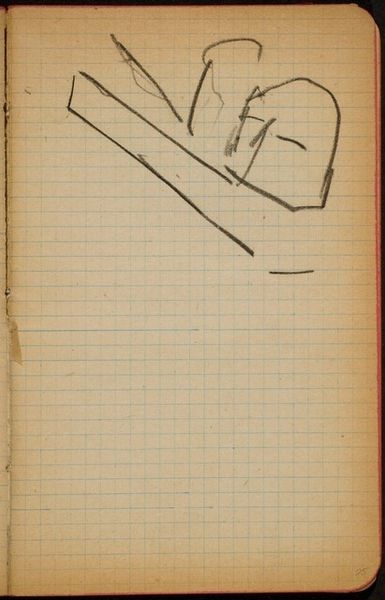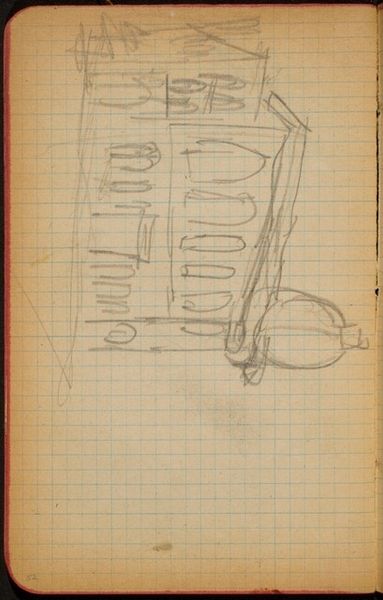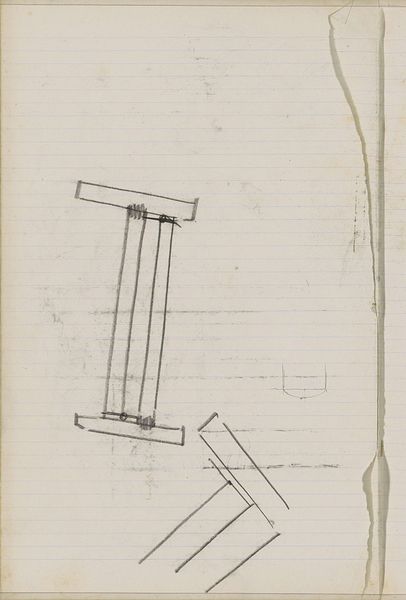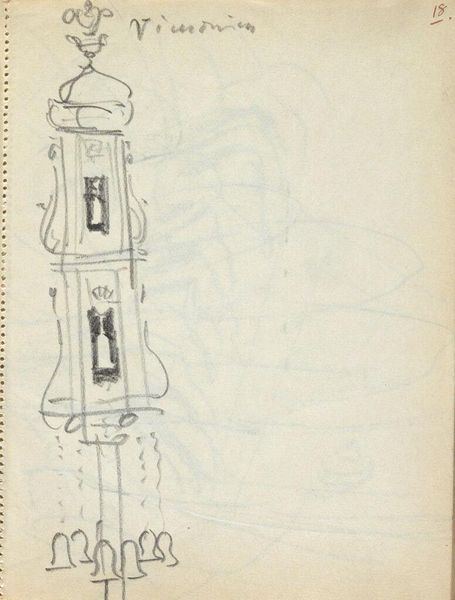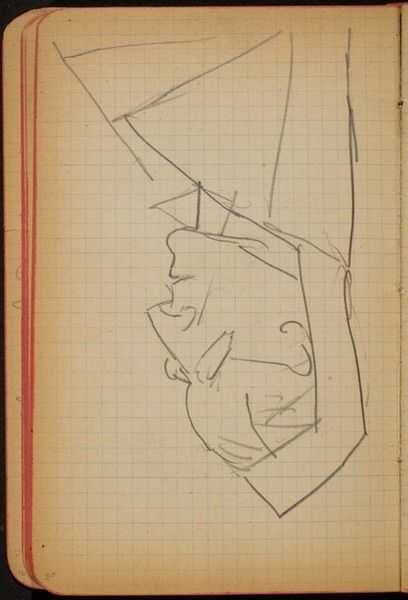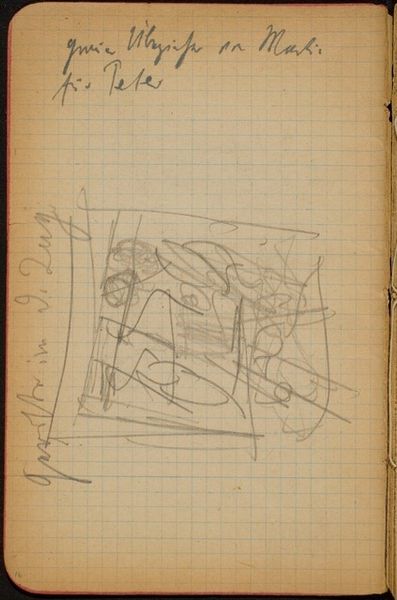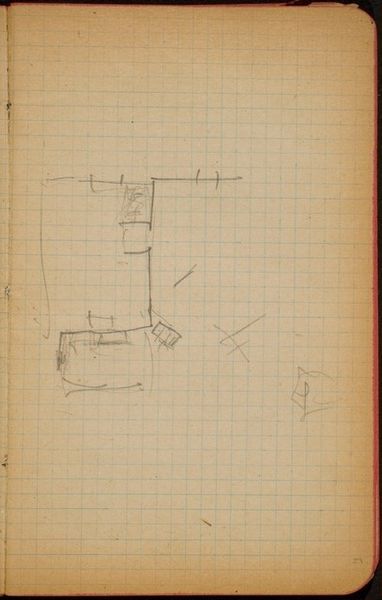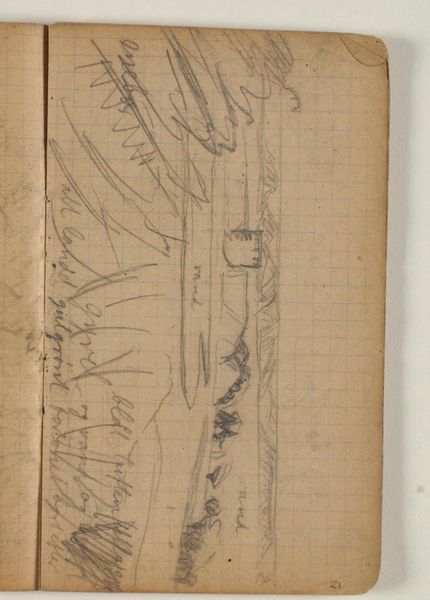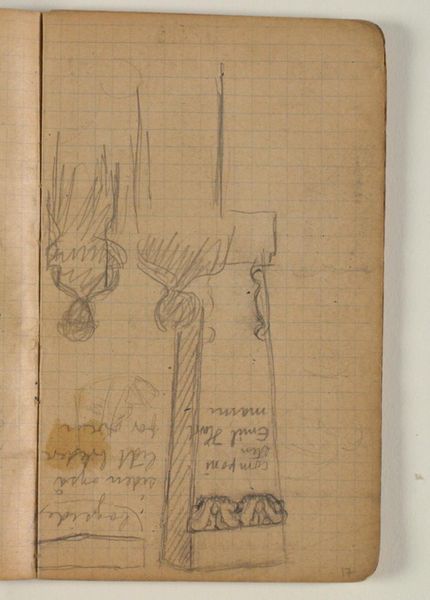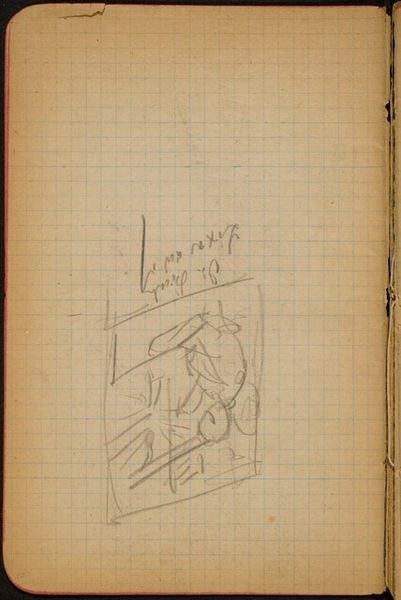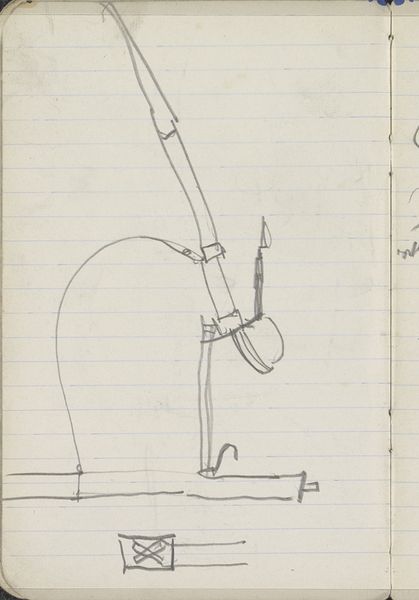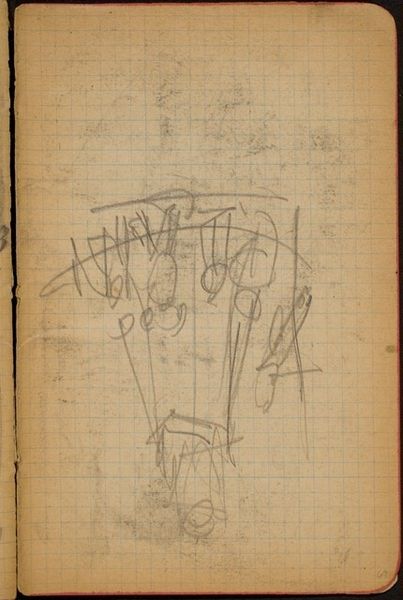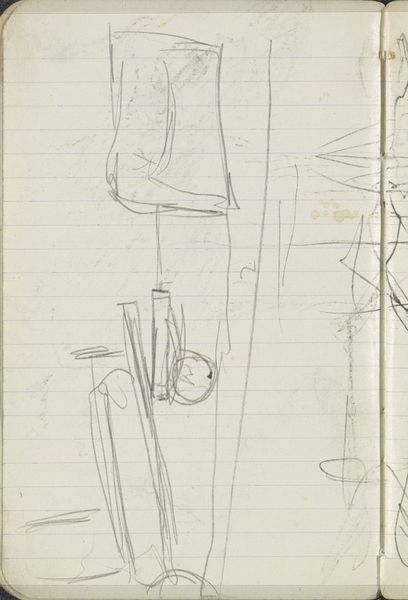![Ausschnitt aus einem Stadtplan (Detail of a Map) [p. 64] by Max Beckmann](/_next/image?url=https%3A%2F%2Fd2w8kbdekdi1gv.cloudfront.net%2FeyJidWNrZXQiOiAiYXJ0ZXJhLWltYWdlcy1idWNrZXQiLCAia2V5IjogImFydHdvcmtzLzI4ZTQ0YzA0LTE4OTgtNDhiNi1hNzYyLWJlY2FmMTE0YTBkMi8yOGU0NGMwNC0xODk4LTQ4YjYtYTc2Mi1iZWNhZjExNGEwZDJfZnVsbC5qcGciLCAiZWRpdHMiOiB7InJlc2l6ZSI6IHsid2lkdGgiOiAxOTIwLCAiaGVpZ2h0IjogMTkyMCwgImZpdCI6ICJpbnNpZGUifX19&w=828&q=75)
Ausschnitt aus einem Stadtplan (Detail of a Map) [p. 64] 1918 - 1919
0:00
0:00
drawing, paper, graphite
#
drawing
#
paper
#
expressionism
#
graphite
#
cityscape
Dimensions: page size: 15.8 x 10.5 cm (6 1/4 x 4 1/8 in.)
Copyright: National Gallery of Art: CC0 1.0
Curator: Max Beckmann produced this work, "Ausschnitt aus einem Stadtplan," or "Detail of a Map," between 1918 and 1919. It's a graphite drawing on paper. What do you make of it? Editor: It’s evocative. Raw. Seeing it reminds me of feverish, anxious scribbles, like someone trying to orient themselves within a rapidly changing and possibly hostile environment. The sketchiness makes me think of the mental state of someone lost, not necessarily physically, but existentially perhaps. Curator: That aligns with the context in which it was created. Beckmann experienced intense trauma during World War I, serving as a medical orderly. That experience dramatically impacted his artistic output and worldview. He was even discharged due to a nervous breakdown. Editor: That makes sense. This piece feels like an attempt to grasp some semblance of order. Mapping the city streets becomes a way to chart not just physical space, but his own psychological landscape. The cityscape theme isn't just aesthetic. Curator: Precisely. Beckmann was deeply concerned with the fragmentation of society and the individual’s place within it following the war. He channeled Expressionism as a means to represent the internal experience, making the invisible visible through these jagged lines and distorted perspectives. Editor: The grid of the paper grounds the frantic nature of the lines a bit. Is this suggesting, perhaps, that there's an underlying structure attempting to restrain or make sense of chaotic reality? There's also a sense of powerlessness to me. The map offers a route, but there's a feeling of being trapped by the limitations. Curator: Maps inherently reflect power structures, the ability to define and control space. But here, as you said, there’s that vulnerability. It’s as if the attempt to map, to control, to define is always incomplete, fractured. Post-war, this represents the disillusionment with previous modes of representation and control, which were proving to be completely failed strategies. Editor: And I suppose there's also something to be said about how accessible maps, even sketch maps, have become due to developments of technology. Now the power to map is becoming more distributed, and arguably decentralized from the institutions you've mentioned. It also reminds me of protest marches, reclaiming space… Curator: Interesting point! That really connects this work to contemporary struggles for visibility and agency within urban spaces. Beckmann might've been surprised to see that in his work. Editor: Indeed. Looking at it now, my appreciation goes even deeper, now understanding what's behind this simple looking image. Thank you.
Comments
No comments
Be the first to comment and join the conversation on the ultimate creative platform.
